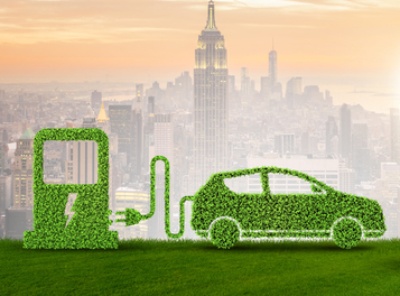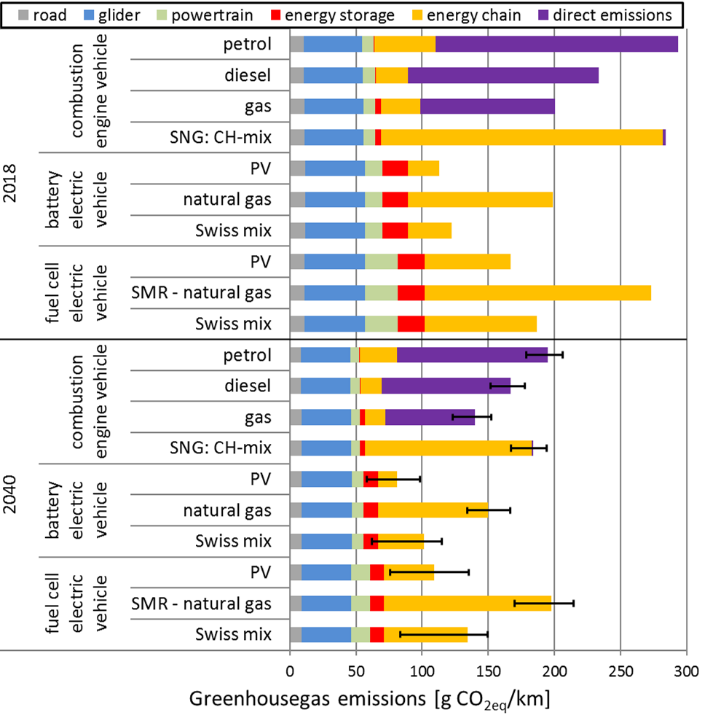Electric mobility: is it environment-friendly or not?
- 6/18/19 10:07 AM
- Kirsten Oswald
Newest research from the Paul Scherrer Institute gives positive outlook in terms of environmental impacts

Electric mobility could be one of the solutions leading to a more sustainable future at least for passenger cars. However, in literature and media there are mixed messages about the total carbon footprint of this technology and other environmental indicators like particulate matter and toxicity. Some sources claim that although the direct tailpipe emissions of battery electric vehicles (BEVs) are zero, the total lifecycle emissions are higher than those of conventionally powered cars. Lifecycle calculations factor in not only the direct operational emissions of the vehicle, but also those emitted during the production of the vehicle and its components as well as the environmental footprint of the electricity that is used to charge the battery. Amongst these, the source of electricity is the most decisive factor.
Newest results from the Laboratory for Energy Systems Analysis at the Paul Scherrer Institute (PSI), however, paint a more favorable picture of electric mobility under the Swiss conditions suggesting that it is the only realistic option to reduce greenhouse gas (GHG) emissions from cars decisively. Even today, BEVs are already more climate-friendly than their gasoline and diesel counterparts if they are charged with electricity from renewable sources (see the figure below). With low-GHG electricity, the overall environmental impacts of BEVs are also lower. Other technologies like fuel cell electric vehicles (FCEVs) or conventional cars run on synthetic natural gas can also offer overall emission reductions if electricity used for fuel production comes from low-carbon renewables. While the calculations focus on the Swiss case, where the majority of electricity comes from a low-carbon electricity mix, a global assessment shows that electric mobility is already a good option in many other countries today (Bauer and Cox 2019).

Current and projected (2040) lifecycle emissions of different passenger car powertrain technologies. Error bars for 2040 represent different climate policies and the resulting differences in both Swiss and global energy supply. SNG = synthetic natural gas; PV = solar photovoltaic; SMR = steam methane reforming (Figure: Christian Bauer, PSI).
Results from PSI were obtained by using a systematic approach based on new data for result-driving parameters and crediting future technology advancements as well as estimating uncertainties. The whole approach is state-of-the-art and fully transparent and strongly suggests that electric mobility is a favorable option from an environmental point of view. However, these results do not mean that electric mobility is a fix-all solution without drawbacks. There are a number of challenges that still need to be tackled. One of them is that the environmental performance of electric mobility strongly depends on the availability of huge amounts of additional electricity, which if climate protection is taken seriously, should preferably be nearly carbon dioxide-free. For example, replacing the entire Swiss car fleet with BEVs would require about 14 TWh of additional electricity per year, with FCEVs the amount more than doubles. The current electricity demand of Switzerland is about 60 TWh (Swiss Federal Office of Energy, BFE 2018) and according to the latest estimates the exploitable new renewable electricity potential is on the order of 20-25 TWh per year thus replacing nuclear (though not in winter as the main part of this potential is solar photovoltaic) (BFE 2017). The question arises where the major part of additional low-GHG electricity will come from, particularly in winter. Thus, the availability and source of this electricity is a central issue, which needs to be addressed by politics and industry in order to allow a very high level of penetration of electric cars with positive contribution to climate protection.
These new results were presented at a public SCCER Mobility event in May of this year. In the ensuing panel discussion with experts and stakeholders in the field, the challenging issue of energy provision was also central. Christoph Schreyer (BFE) contended that electric mobility is currently the best option for reducing GHG emissions from the passenger car sector and it goes hand in hand with the expansion of renewables. However, it is important to keep in mind that renewable generation will have to supply all other sectors as well. On the other hand, Andreas Burgener (auto-schweiz) argued that since all powertrains and fuels are not emission-free yet, existing options to improve their efficiency should also be exploited. Looking beyond passenger cars, Stefan Hirschberg (PSI) pointed out that the projected increase of demand for passenger air travel could nearly nullify all emissions savings on the ground, despite significant expected improvements in aircraft design. The panelists agreed that aviation will likely remain one of the most difficult sectors to decarbonize in the coming decades. With no obvious technical solution to strongly reduce the climate impacts of international air transport in sight, focus will have to be placed on demand reduction and, where possible, modal shift to e.g. high-speed trains. Yet Christian Zeyer (swisscleantech) was skeptical about how much our demand for flying can be lowered and claimed that innovation in the field should be promoted, e.g. electric flying for short distances and generating synthetic fuels from renewable electricity. In the end, there is no easy fix. Reaching climate goals and significant reductions of GHG emissions will require both technology innovation and implementation as well as a shift in behavior effectively reducing our demand for mobility and energy.
More details about the results of the PSI study can be found in the slides by Christian Bauer, which were presented at the event.
For questions related to this topic, please contact Stefan Hirschberg or Christian Bauer, who provided inputs for this article. They are both active members of Capacity Area B2, where Stefan Hirschberg coordinates research and Christian Bauer is the lead scientist on lifecycle assessment at PSI.
!!! This document is stored in the ETH Web archive and is no longer maintained !!!